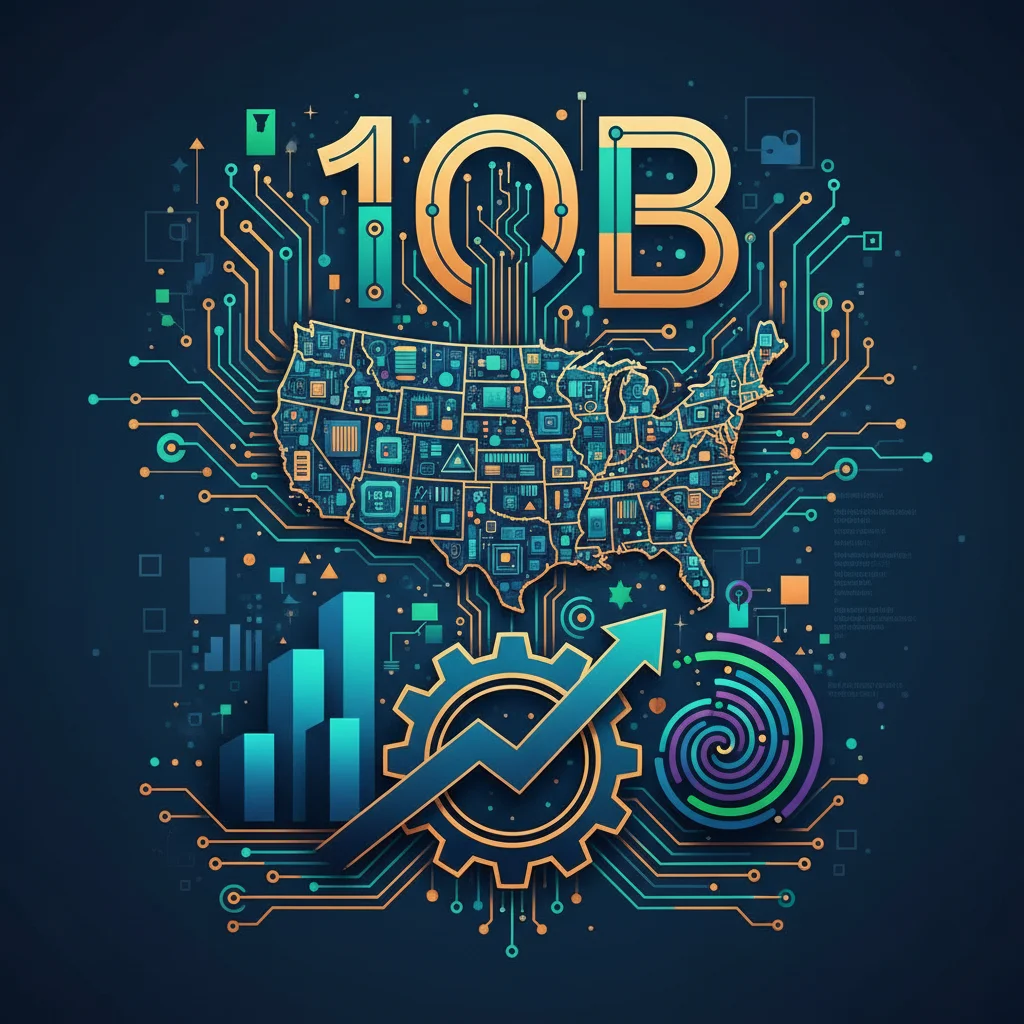
JPMorgan’s $10B Bet on American Tech: Why Your Startup Should Be Paying Attention
You’ve probably seen the headlines. JPMorgan Chase, one of the world’s financial titans, is earmarking up to $10 billion for an investment push designed to strengthen America’s domestic supply chains. On the surface, it sounds like a story about finance, geopolitics, and manufacturing. But if you’re a developer, a tech entrepreneur, or a startup founder, you need to read between the lines. This isn’t just about building factories; it’s about funding the next industrial revolution—one that will be built on code, data, and intelligent systems.
The announcement came with a stark warning from JPMorgan’s chief executive, Jamie Dimon. He cautioned that the U.S. has become dangerously dependent on “unreliable” foreign sources for materials that are “essential” to national security. Think semiconductors, pharmaceuticals, rare earth minerals, and the components that power our green energy transition. For decades, the prevailing logic was to offshore manufacturing to the cheapest location. That era is coming to a dramatic and decisive end.
This massive capital injection is more than just a financial strategy; it’s a signal. It’s a declaration that the future of American industry won’t be a repeat of the past. We’re not talking about bringing back the assembly lines of the 1950s. We’re talking about creating the “Factories of the Future”—hyper-connected, automated, data-driven facilities that require a sophisticated technological backbone. And that’s where the opportunity for the tech world explodes.
From Rust Belt to Tech Belt: The Software-Defined Factory
When you hear “reshoring” or “onshoring,” it’s easy to picture smokestacks and manual labor. The reality is far more advanced. Modern manufacturing is a high-tech endeavor, and this new wave of domestic industrialization will be built on a foundation of cutting-edge technology. This is where the keywords that define our industry—AI, cloud, SaaS, and automation—become the pillars of this national project.
Consider the modern semiconductor fabrication plant or a next-generation battery gigafactory. These aren’t just buildings with machines; they are complex ecosystems powered by software. Every single process, from material intake to final quality control, is monitored, managed, and optimized by layers of code and intelligent algorithms.
- Automation and Robotics: The factory floor will be run by advanced robotics, not just for repetitive tasks, but for precision work that requires machine vision and real-time adjustments. This requires sophisticated control software and programming expertise.
- Artificial Intelligence (AI) and Machine Learning (ML): AI will be the brain of the operation. Machine learning models will predict equipment failures before they happen (predictive maintenance), use computer vision to spot microscopic defects, and constantly optimize production lines for maximum efficiency and minimal waste.
- Cloud and SaaS: The sheer volume of data generated by these smart factories is staggering. This data needs to be processed, stored, and analyzed in the cloud. This creates a massive opportunity for new B2B SaaS (Software as a Service) platforms tailored to industrial needs—from supply chain logistics to factory floor dashboards.
- Cybersecurity: When your entire manufacturing base is connected to the internet, it becomes a prime target. Protecting this critical infrastructure—known as Operational Technology (OT)—from cyber threats is no longer an IT issue; it’s a national security imperative. The demand for specialized cybersecurity solutions for industrial control systems will skyrocket.
This shift represents a fundamental rewiring of the economy. The capital is now flowing, and it’s looking for the innovation to make this vision a reality.
Where Will the Billions Go? A Look at the Tech Opportunities
JPMorgan’s investment isn’t a monolithic block of cash; it will be strategically deployed into sectors deemed critical for national and economic security. While the exact allocation is yet to be seen, we can analyze the key areas of focus and, more importantly, the specific technology opportunities that arise within each.
Below is a breakdown of potential investment sectors and the crucial role software, AI, and innovation will play in their revitalization.
| Key Investment Sector | Strategic Importance | Key Technology Opportunities for Startups & Developers |
|---|---|---|
| Semiconductors | The “brain” of all modern electronics. A severe bottleneck was exposed during the pandemic, highlighting extreme dependency on Asia. |
|
| Green Energy Tech (Batteries, Solar) | Essential for the energy transition and reducing reliance on foreign fossil fuels and manufacturing. China currently dominates this supply chain. |
|
| Advanced Materials & Rare Earths | Critical inputs for everything from EVs and wind turbines to defense technology. Processing is highly concentrated in a few nations. |
|
| Pharmaceuticals & Medical Supplies | The pandemic revealed shocking vulnerabilities in the supply of essential medicines and personal protective equipment (source). |
|
The Call to Action for Entrepreneurs and Developers
So, what does a $10 billion investment fund from a banking giant actually mean for you, the person building the future line by line? It means the market is being created for you. The demand for your skills and products is about to receive a massive, sustained injection of capital. Large corporations, flush with investment and driven by a new mandate, will be desperately seeking innovation to build, secure, and optimize their new domestic operations.
This is your cue to think about how your skills or your startup’s product fits into this new industrial paradigm:
- For the B2B SaaS Founder: Are you building a generic CRM, or are you building a platform that can manage the complexities of a multi-state manufacturing supply chain? The market for niche, industry-specific software is about to get very, very hot.
- For the AI/ML Engineer: Your skills are no longer just for optimizing ad clicks. They are now critical for optimizing national infrastructure. From predictive maintenance on factory floors to optimizing energy grids, the number of high-impact, real-world problems to solve has just multiplied.
- For the Cybersecurity Professional: The attack surface is expanding from corporate networks to the machinery that builds our country. Expertise in OT security and protecting critical infrastructure will be one of the most sought-after (and lucrative) skill sets.
- For the Developer: The world of industrial programming is modernizing. The need for robust APIs, reliable cloud integrations, and intuitive user interfaces for complex industrial machinery is immense. The days of clunky, outdated factory software are numbered.
According to the Financial Times, this initiative is part of a broader trend, with U.S. companies bringing supply chains closer to home to mitigate risks seen in recent years (source). This isn’t a fleeting headline; it’s the beginning of a multi-decade economic realignment.
Building the Future, Not Rebuilding the Past
JPMorgan’s $10 billion fund is a powerful catalyst, but it’s part of a larger movement that includes government initiatives like the CHIPS and Science Act. The message from both the public and private sectors is unified: the future of American strength lies in its ability to innovate and build, right here at home.
For the tech community, this is a call to arms. It’s an invitation to move beyond the digital-only world and apply our skills in software, AI, and automation to the foundational elements of the economy. This is an opportunity to build companies of lasting significance, solving problems that are fundamental to national security and economic prosperity.
The capital is ready. The demand is clear. The question is no longer *if* this transformation will happen, but who will build the technology that powers it. Will it be you?


